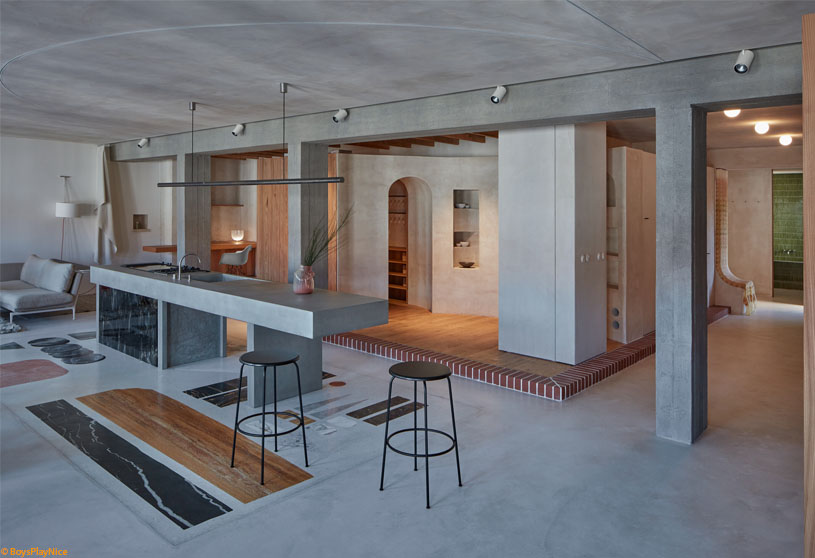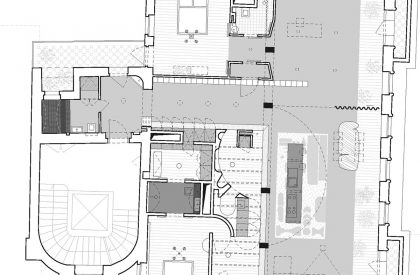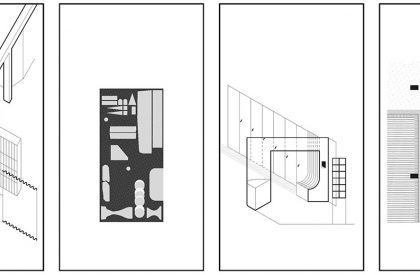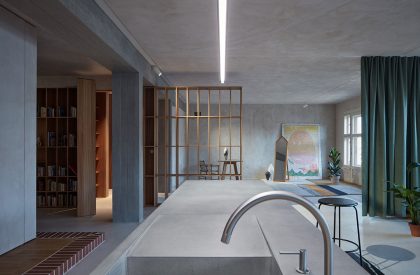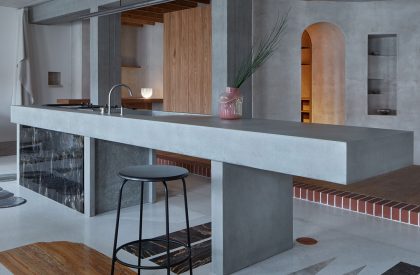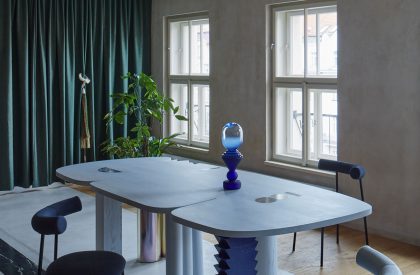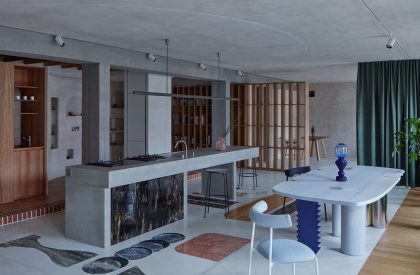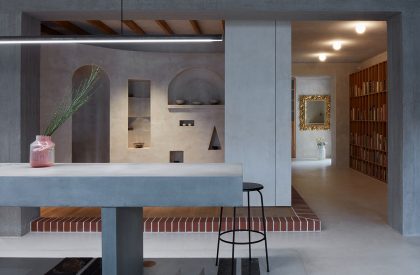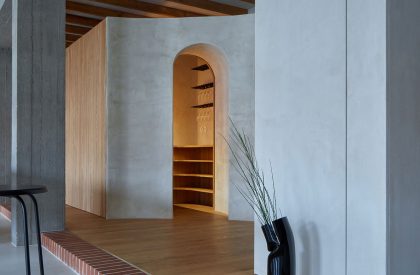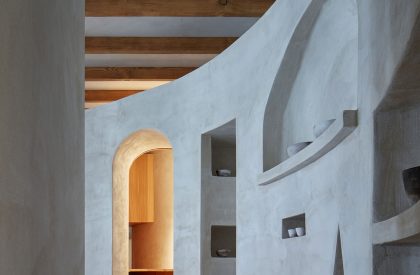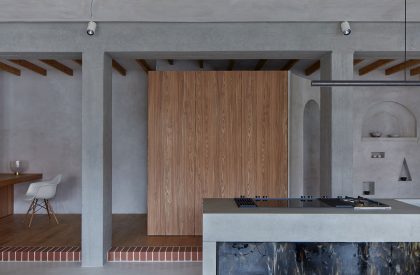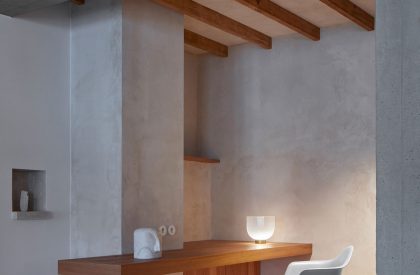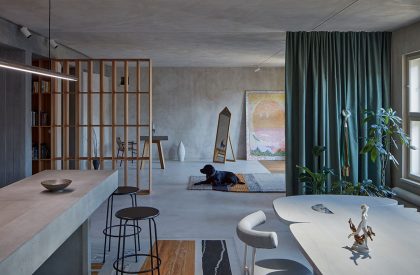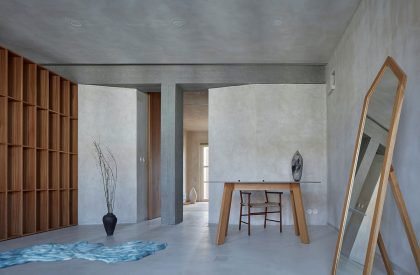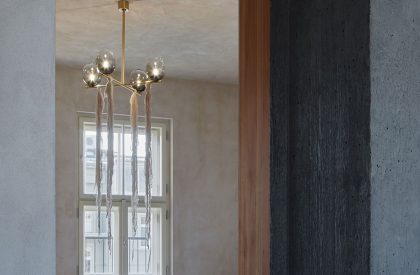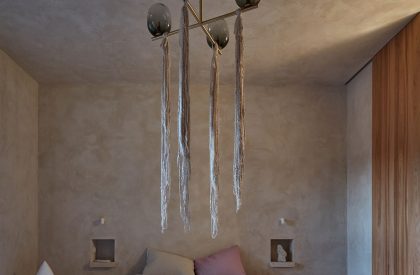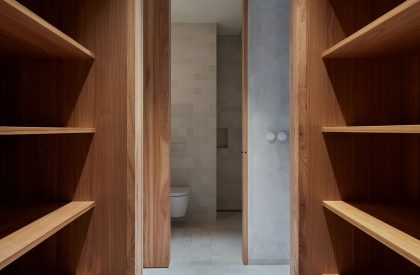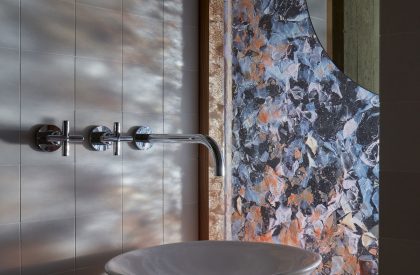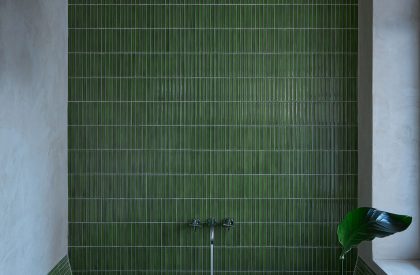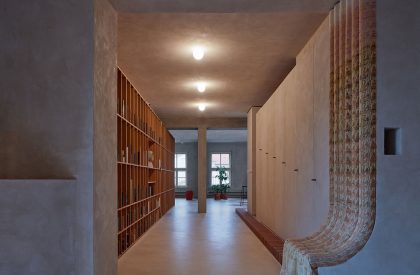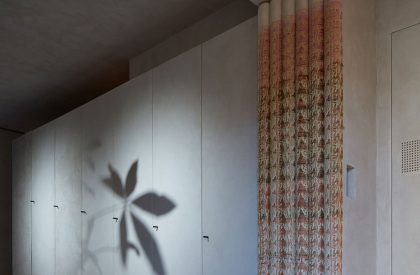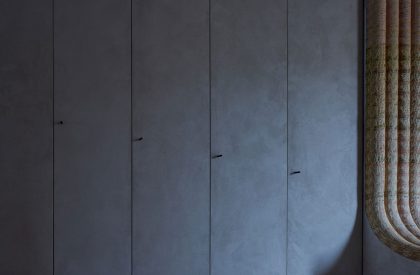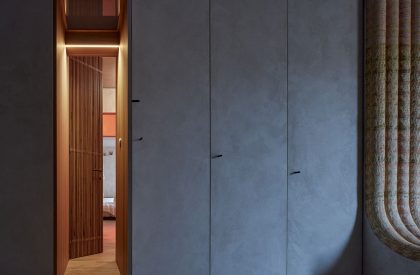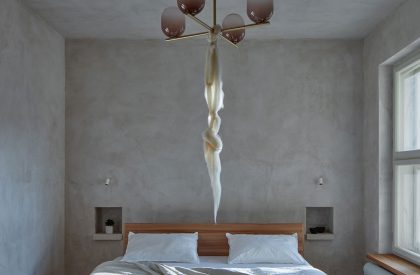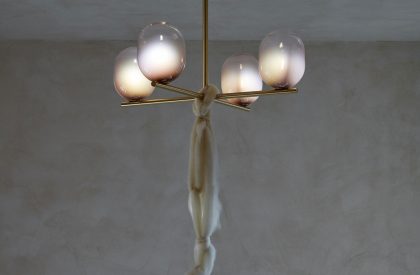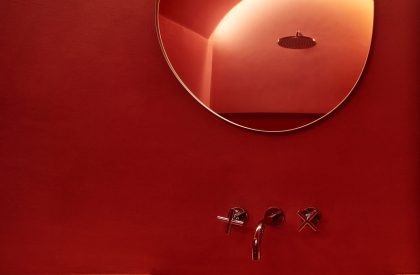Excerpt: The architecture project Ovenecká 33 by Objektor architekti explores different stylistic elements and the boundaries between private and public space. The idea was to create a space where one never has to return along the same route; to create a space that was shared, open, and permeable while still containing hidden corners and secrets. The designers incorporated various oddities and materialized childhood dreams into the minimalist base.
Project Description

[Text as submitted by architect] Creative Concept: The lead architect, Tereza Porybná, has always been interested in connecting people and exploring the permeability of different boundaries, whether interpersonal, cultural, genre, or species. Within the design of Ovenecká 33, she experimented with different stylistic elements and the boundaries between private and public space. She wanted to create a space that was shared, open, and permeable while still containing hidden corners and secrets.
The idea was to create a space where one never has to return along the same route. A space that is distinctive yet always changing, like a gallery or theatre stage. The designers incorporated various oddities and materialized childhood dreams into the minimalist base; for example, a home throne, a kitchen that looks like a cave, or a secret doorway in the library.
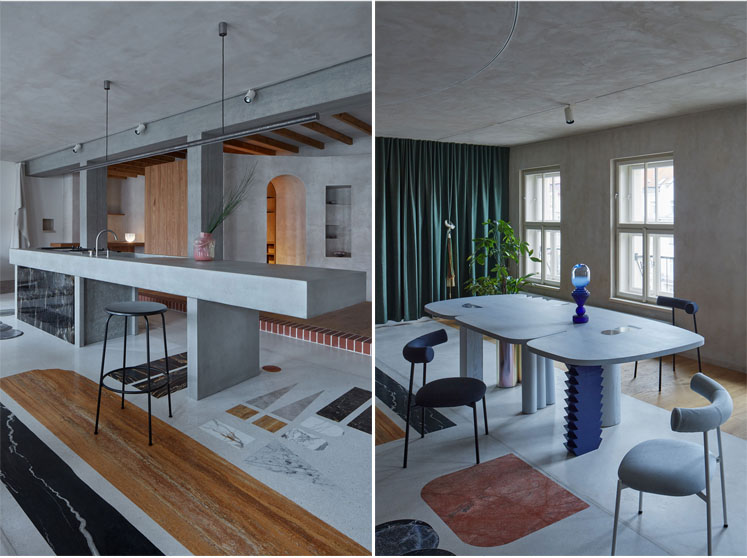

Various co-creators, designers, artists, and friends were involved in the eclectic play and participated in their interventions. These small experiences, such as sorting through pieces of stone that then became a painting on the terrazzo floor, dyeing yarn into jacquard, or assembling glass mosaics, helped to better understand different creative processes and crafts.
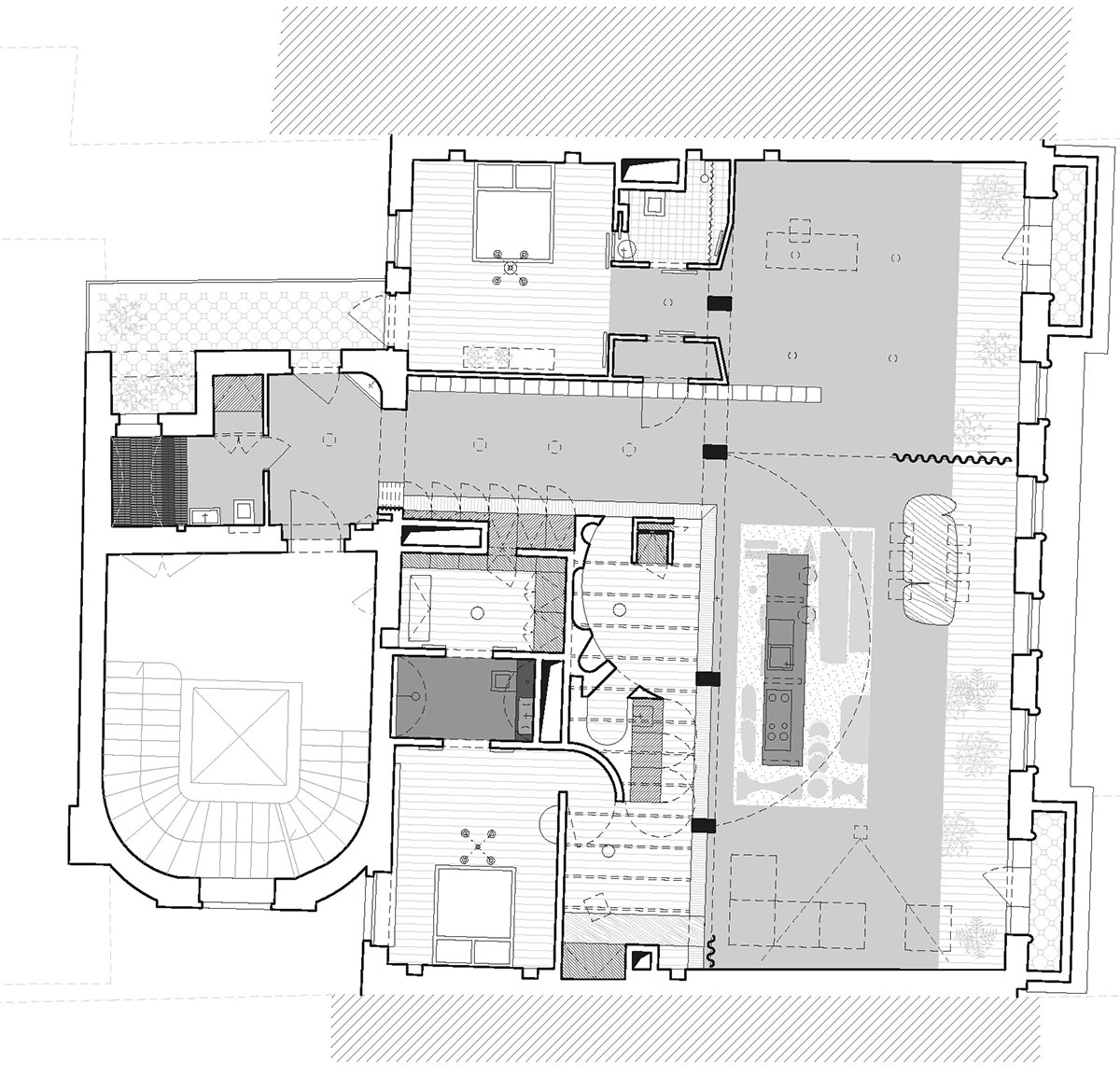

Architectural Design: One enters an empty space with a floor area of about two hundred square meters. The first impression of the apartment is purely horizontal. All that is left of the historic building are the exterior walls, and of the modern reconstruction, only the massive concrete skeleton. This is the support without which the space would literally collapse. The disappearing history of the house and the clear horizontality of the open space offer an unobstructed space for imagination.
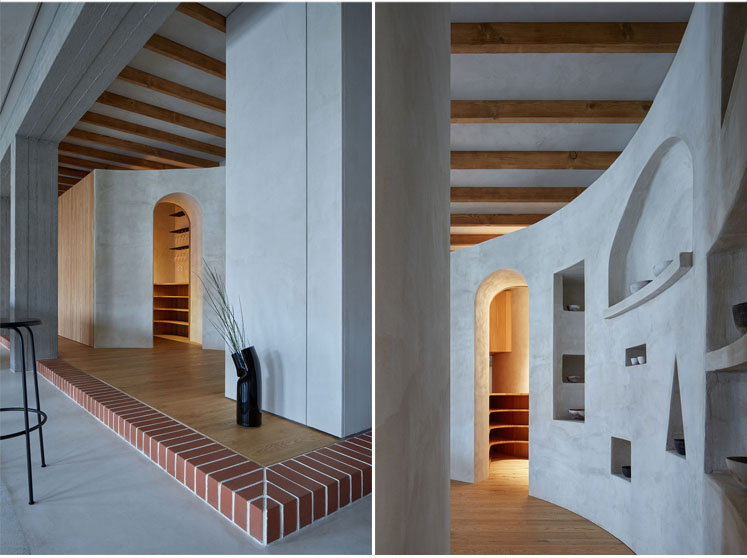


The reconstruction was conceived as a living scenography of changing and permanent backdrops. The designers are creating a framework that will be added to, updated, and used. They are working on the edge of exhibition support designs and adjustments to individual artefacts. With the static concrete skeleton, they rhythmize the built-in orbital layout with variable entrances and surprising viewpoints. The energy of the apartment changes with the time of day, the movement of the sun, and the stucco patterns of the walls. Some atmospheres are fleeting, disappearing in time; others are static, concretely experienceable, and linked to physical movement.
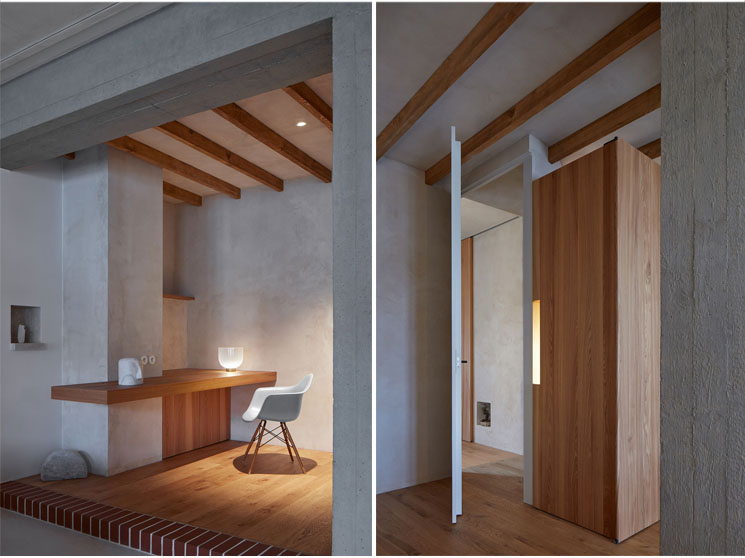
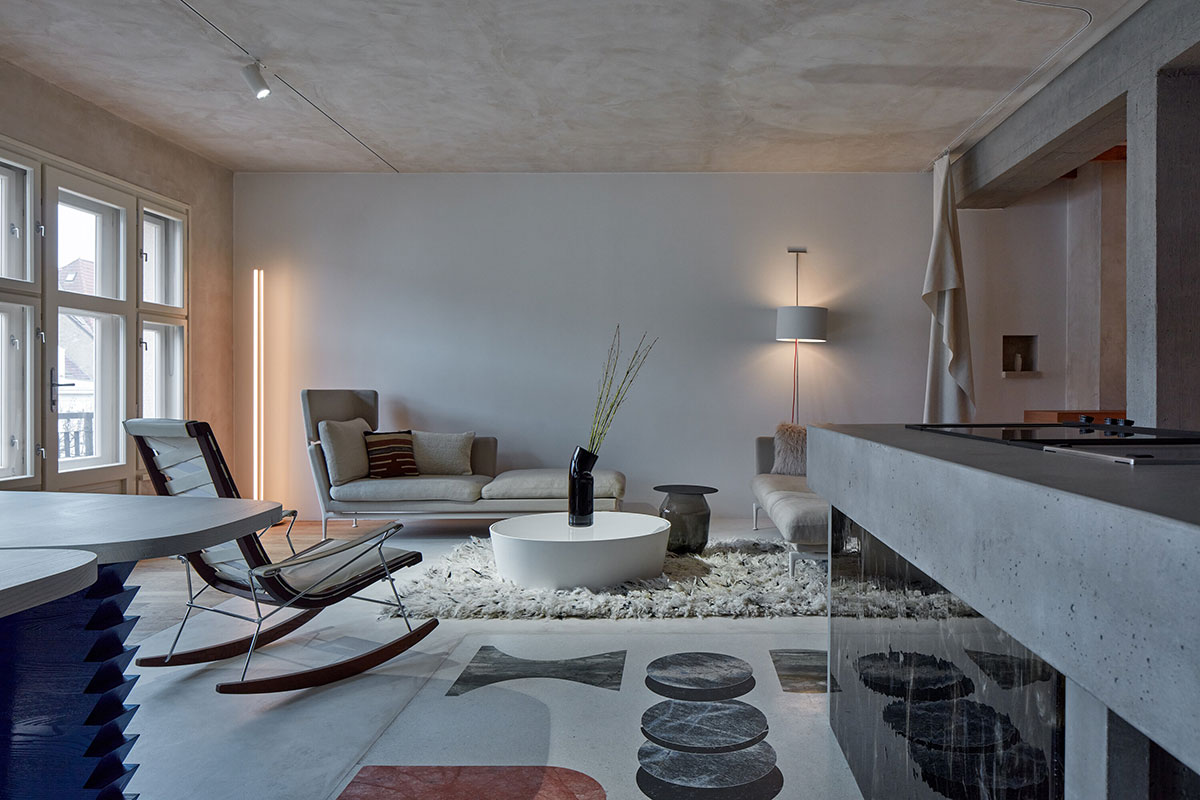
Today, the apartment provides a base for the work of residential artists. It serves as a space for exhibitions and social events, but also as a retreat for the investor with this unconventional task: to approach the design of the apartment as an art installation, creating scenes and corners that the user chooses according to mood.
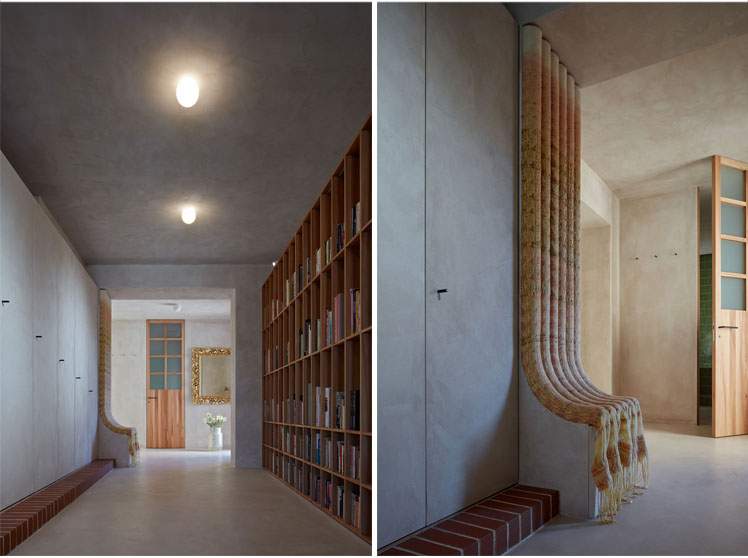


The sunny entry space is dominated by the tectonically expressive figures of a corner stucco drinking fountain and a built-in woven throne. The neutral color scheme is enlivened by a rich green undertone from the adjacent bathroom. The austere geometry of the bookshelf progresses into a passageway through a beam into the living space.
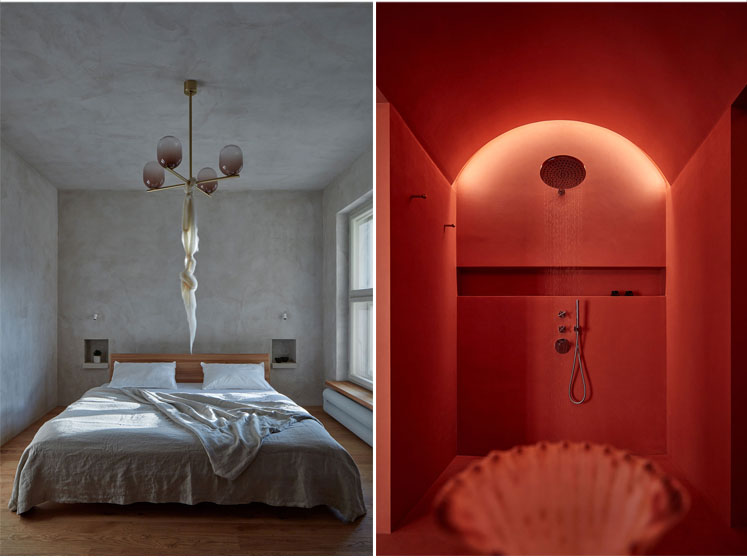

The materiality of the floors and ceiling patterns suggests a three-part layout: a communal space, a residential space with a studio, and the apartment owner’s bedroom. Privacy is ensured by strictly separating the bedroom from the lounge area and gradually mixing the three atmospheres. The stucco bedroom with storage niches flows through the vaulted bathroom to a vertically slatted walk-in closet with a secret passage to the entrance hall.

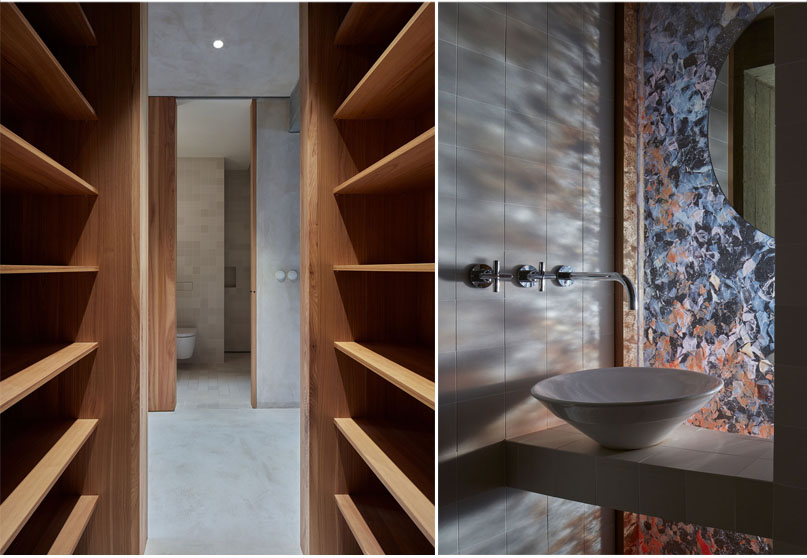
The other zones of the apartment flow seamlessly into each other, with a loose boundary between them. Privacy can be regulated by vertical sliding elements. The studio bathroom is conceived as a strict square module. Its starkness is softened by a stained-glass window that lets in coloured reflections of light. The neutral white colour becomes a play of colourful shades.
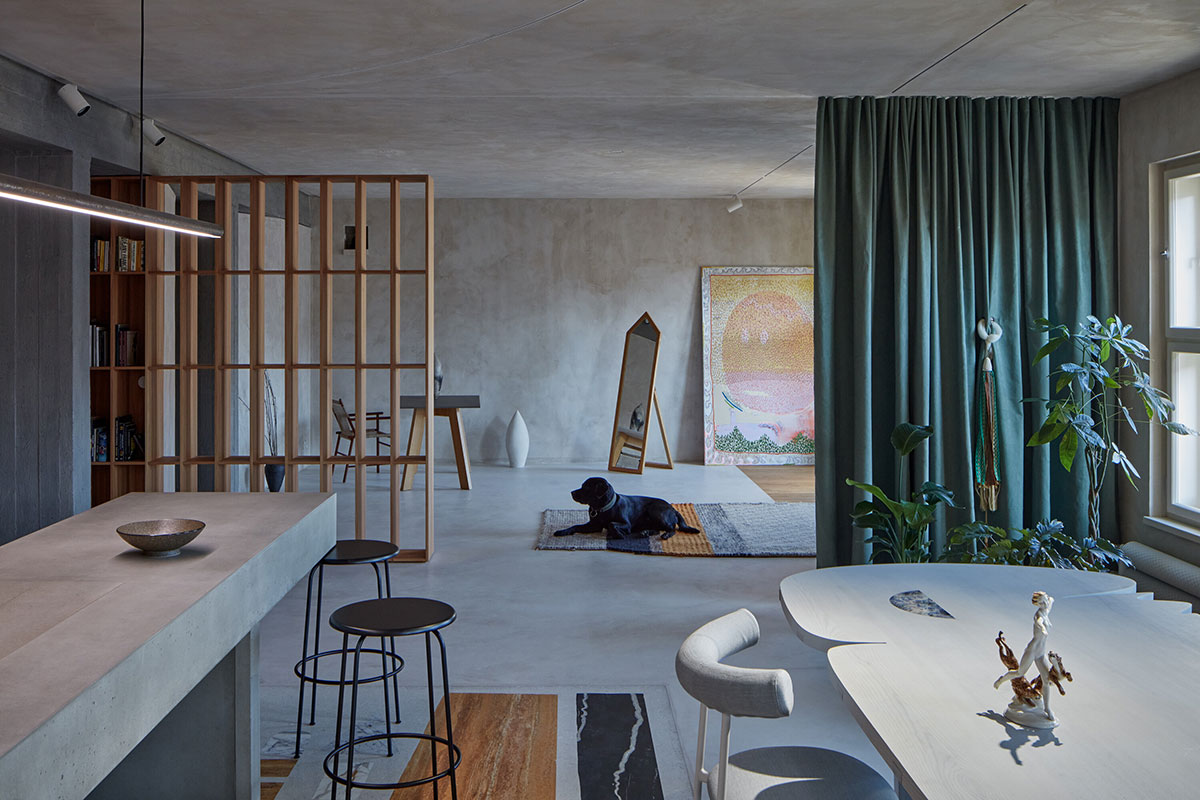
A terrazzo composition with a concrete bar dominates the centre of gravity of the main communal space. This is complemented by freely movable elements. The materiality of the stucco, elm wood, floor screed, and concrete makes the embedded artefacts stand out.
